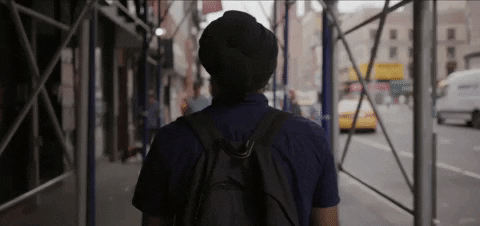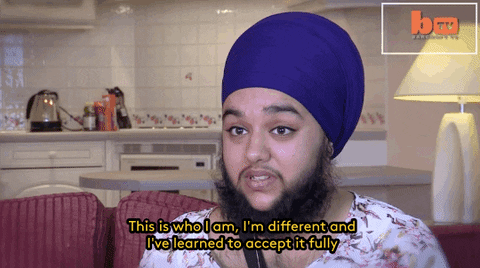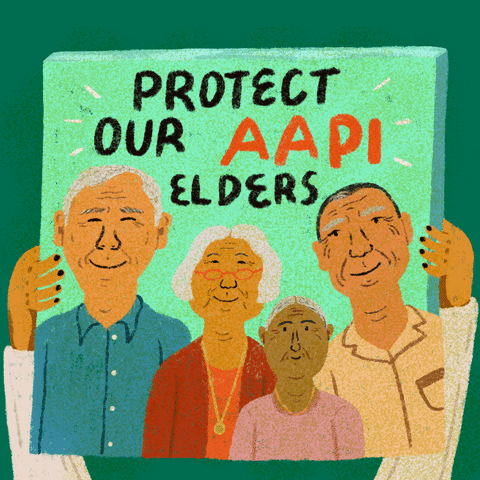Understanding the White Supremacy Between Interracial Hate CrimesWith the attack of three Sikh men who vary in age in Richmond Hill, Queens by two black men, people were quick to jump to being racist against Black community. Here is why that is flawed.The world was shaken by the hate crimes that took place in Richmond Hill, Queens against Nirmal Singh, Gulzar Singh, and Sajan Singh. As someone who grew up in Richmond Hill and has organized Sikh Punjabis there, I am all too aware of the structural and institutional flaws that continue to fail our community in responding to hate crimes the way they should be responded to. Across the United States we saw an uptick in hate-based when Nirmal Singh was attacked in South Richmond Hill, Queens on his way to the Sikh Cultural Society, one of the largest congregations in the New York area, I recalled my own experience of seeing the violence that has always lingered in this community in the shadows. Of the hate crimes, I have seen with my eyes when social media wasn’t available to make the pain and trauma of impacted people go viral. It reminded me that despite so many years after 9/11, my community would remain a target for hate. Our daasters, kesh, khara, and every aspect of the 5 K’s that Sikhs adhere to would be under attack and subject to degeneration by an America that has taken so much from our community but given us so little back. After Nirmal Singh got attacked, the attack was posted first on social media and not even reported to the authorities that best address the next steps. In some regards, it was the ‘picture seen around the world’ before local authorities could even get to the incident. The post was peppered with social media handles of people who either saw the incident or were not directly influenced by it. I was reminded of my time going through New York City Public Schools and the enabling of bullying that children would face and the denigration of joora that Sikh boys keep. When I attended P.S.62 I remember in the aftermath of the 9/11 attacks, I was five years old. I experienced my first hate crime at the age of six and many other incidences of bullying in school when it came to my identity and that of others. One night, I was walking home with my mom at the age of six, and we were returning from the Gurdwara this was called the Gurdwara Cultural Center and was in a home because in the year prior, the main Gurdwara Sahib was burned down. The cause of the fire remains unclear to this day. However, as I and my mom were close to our home, a car full of white men sped by us and pelted us with eggs while calling us ‘raghead and terrorists!’. We saw that our home was covered in egg yolk and we never reported this because we didn’t where to go, much less if we can trust the police. My mom also spoke very little English at the time and bridging that barrier was something I could not do as a six-year-old. I could only carry these memories until I was old enough to begin to understand where my power began and where I could influence the outcome of hate-based violence. There were calls from people to ‘find the cameras’ to identify and locate the perpetrator of the attack on Nirmal Singh without a thought about potential tampering of evidence or obstruction of an investigation [when it would be launched]. People pushed themselves to the forefront of this issue and made it about their own follower count at the expense of someone who had just experienced a violent incident. It was easy to gauge this as the first avenue of the report started centering on people other than the ones who were directly harmed [and had wished for privacy but they kept being spotlighted on Instagram stories]. This made me think about the impact of citizen journalism and how it can be misused to cause more harm instead of doing good. These experiences obviously differ and have different but similar circumstances in the perspective of how footage captured by bystanders can be manipulated to fit different narratives. For George Floyd, it was the injustice of the American policing system and the deeply racist treatment that Black Americans face at the hands of the police. With Nirmal Singh, it was how police were weaponized and how local elections are putting visitors from Punjab in harm’s way and also bringing to light how Sikhs have faced discrimination by a multi-faceted system that seeks to deepen discrimination in The TikTok account posted the attacks against Sajan and Gulzar Singh and you can hear someone in Punjabi go on a racist tirade against the Black community as if that was going to make things any better [it obviously does not]. In a recently released interview, Public Defender Jason Wu makes clear why Black and Asian solidarity can’t waver. It’s because we deal with the same institutions of the carceral system and white supremacy. When we have the police and military having their recruitment centers in low-income neighborhoods, it sends a signal to others in our community that they should be the ones to spy on our people and work for the white supremacist state in further oppression of our people. He mentions some very important points to realize for Asian Americans, given our turbulent history in this country in an article released by The Nation:
In the case of the University of Pennsylvania Law, Professor Amy Waxman went off on a racist tirade on a platform provided to her by Fox News Anchor Tucker Carlson. What Waxman has said about people of color are:
In the aftermath of 9/11 in Southeast Queens, there was an emphasis on Community Policing 9/11. That if we only had more Sikhs as NYPD police officers, that would help us as a community be more trusting of that institution and make our people report crimes. But as we saw with Nirmal Singh, not only was he scared to call the police, but he was also afraid to call an ambulance to help him in the aftermath of the attack. Data on Asian American and Pacific Islander Hate CrimesAccording to AAPI Data, a national group that tracks hate crimes across the United States, the rate of violence has increased significantly. •AAPI women report more harassment (69.8%) than AAPI men (63.0%) and AAPI non-binary people (56.3%). During the annual Budget negotiations, New York City Mayor Eric Adams and his team attempted to influence the rollback of Bail Reform in New York State which was passed in 2019 to address the high rate of incarceration within New York’s prison system. According to the New York State Senate, the core facets of Bail Reform laws that protect everyday New Yorkers are:
I grew up a block away from the Sikh Cultural Society and had a front-row seat to our trials and tribulations. From the aftermath of 9/11 to the 2020 General Election, I grew alongside Richmond Hill and saw the raw sides of existing in a space where the politics of India were played out in real-time in this community. Where men would put themselves in front of movements, anointed themselves as decision-makers of the community, silence the voices of women -there are zero women serving on the local Gurdwara committee- and play their part in electing carceral politicians who would play their own part in diminishing resources that the community would access to keep their class interests above the wellbeing of community members who near constantly would be coming in from India, unaware of their rights and where they can turn to for help when needed. When people got off of the plane from John F. Kennedy International airport, their first stop would be in Little Punjab. This is where Sikhs carried out Nagar Kirtans, protested for Khalistan, and fought against Modi’s farm laws. With so much happening in this space, what remains the same is the misuse of religious identity and representation politics to influence hatred towards communities where our attackers come from. In both of the attacks that happened this month, the attackers came from the Black community. It’s an uncomfortable truth that people have been struggling with because our attackers have been white. I say this to point out the distinctions between attackers and to begin to understand the motivations of people of color in attacking each other and the embodiment of white supremacy and ingratiated racism towards each other. I unpacked some of it earlier with Jason Wu talking about why we need to understand the ROOTS of violence. When I went to the Sikh Cultural Society to find someone about the attacks that had happened, someone in the gurdwara adventure and owl the home near the corner of 95th and Lefferts Avenue had been a site for squatters to take over because the city had not demolished the home. They also mentioned that the attackers who were involved had mental health issues that cannot be confirmed at this time. But it does become apparent that the lack of housing in New York is also an issue when it comes to racial equity and ensuring that people have a roof over their heads. It is a strong belief of mine that the actions of a few people do not speak for the whole community -a point that even the Sikh community understands because of the discrimination we face. After Nirmal Singh, Sajan Singh and Gulzar Singh were attacked some members of the Sikh community swiftly urged the rollback of Bail Reform laws in New York State. Talking about Bail Reform rollbacks in the cases of Nirmal, Sajan, and Gulzar Singh would not be applicable considering that Vernon Douglas of Brownsville was taken into custody for second-degree assault as a hate crime, aggravated harassment, and second-degree assault tied to Nirmal Singh’s race and religion. This does shine a light onto the candidate running for State Senate in District 17, Japneet Singh, and his slate of candidates who are running more conservatively in the district and appealing to the public on a pro-cop and policing stance as opposed to one that empowers more people to find common policy solutions to the issues. The root cause of violence should be the first avenue that we take to understand the deeply rooted and prejudiced view that communities of color are holding toward one another and how the Asian American and Pacific Islander community as a whole has been facing a severe uptick in hate-based violence. Young people in Richmond hill have begun to arm their elders with pepper spray and are replicating community patrols that have been happening in many different Asian American and Pacific Islander groups. The exception here is that some people have attempted to take the law into their own hands through violence and are setting themselves up for becoming part of the prison-industrial complex that they are trying to roll back bail reform. It is my hope that these patrols continue with the understanding that we should take into account the consequences the carceral system has when sending Sikhs to jail. There have been several attempts to understand the motivations for violence between interracial communities. In an article published by Vox News in trying to unpack the tensions that are spurring hate crimes between communities, they make an interesting point that presents the history of how white supremacy and racism from other groups:
And while they unpack the Korean American community as an example, Sikh Americans first step foot in the United States on April 6th, 1899 when they set foot in California by the way of Vancouver. As a collective community, we’ve been in this country for the past 130 years and arrived at a time of -you guessed it= a rise in anti-Asian Asian sentiment in the United States. According to Harvard University’s Pluralism Project:
I found a lot of value by reading Valarie Kaur’s See No Stranger: A Memoir and Manifesto of Revolutionary Love. She did reading the ways in which Valerie unpacks what to do when we are attacked by others and how we can through the power of healing and understanding try to reconcile what's happened with us and to try to prevent it going forward. She says:
Sometimes when moments of hate go viral it can evoke a visceral urge for us to devolve back into negative stereotypes we have about different people and their behaviors. We go down the rabbit hole of never trusting, never building community, and never ensuring that we fight TOGETHER. We cannot blanket the Black community inasmuch as we can blanket blame the Sikh Community when something bad happens. We all must do our part in learning solutions that can help strengthen our communities against white supremacy and division. When we read the news, learning about bias, learning about someone’s political motive, learning the nuances of political hierarchies is important before we jump to hating people who are also oppressed by the same systems. Kaur Republic is an independent newsletter covering Punjabi Perspectives on American Issues. We are completely funded by our newsletter subscribers and hope that you will consider a monthly or yearly contribution to keep the paywalls off our stories so they can remain open for learning. Follow us on Instagram| Follow Us on Twitter| Follow Navigating Politics with Navjot| Paid Subscribers get an exclusive Weekly Round-Up Newsletter| You’re a free subscriber to Kaur Republic Newsletter. For the full experience, become a paid subscriber. |




